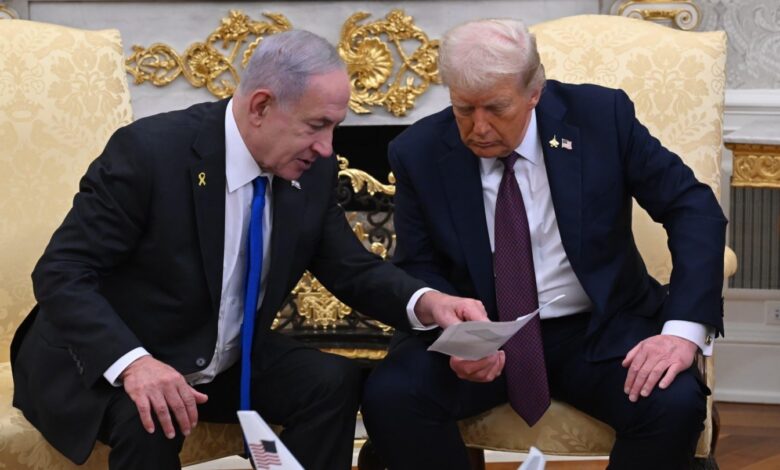Gaza Peace Plan: Between the Stick and the Poisoned Carrot

By Víctor de Currea-Lugo
The peace plan proposed by Israel and the United States for Gaza is not only a trap, but it repeats the same mistakes of the past that did not lead to peace.
- It reduces resistance to terrorism and limits terrorism to what Hamas does; there is no mention of Israeli terrorism. In this context, neither genocide nor occupation is recognized.
- The plan is unclear on the limits of Israeli troop withdrawal. Considering Netanyahu’s statements after launching the proposal, such withdrawal is unlikely to happen.
- It does not mention the more than 10,000 Palestinians detained illegally. Like previous proposals, it imposes duties on the occupied before the occupier.
- Israel would release less than 15% of those detained since October 2023. The plan acknowledges that minors are among those held.
- It proposes Hamas’ surrender. In other words, it seeks to win at the negotiating table what Israel failed to achieve on the battlefield. Israel has already failed militarily.
- The delivery of humanitarian aid is conditional on Hamas’ surrender. Humanitarian aid, by definition, must be unconditional. Supporting this is supporting the use of hunger as a war strategy.
- The self-determination of Gazans is not even hinted at. The proposal of an “apolitical government” is self-contradictory. Furthermore, a government led by Trump and Tony Blair offers no guarantee. The plan subjects the Palestinian Authority to externally imposed reforms aimed at “attracting investors.” In other words: annexing neoliberalism to genocide.
- It claims no one will be forced to leave or denied return. Yet the 1948 refugees are still waiting for Israel to respect UN resolutions and allow them to return. Israel’s constant practice is deportation.
- Hamas is more than an armed group. Excluding it from Gaza’s future is naive and perverse. The plan also envisions a demilitarized Gaza, incompatible with a sovereign Palestinian state.
- The regional threat cited in the plan is Hamas, even though it has not bombed Lebanon, Yemen, Syria, Iraq, Iran, or Qatar.
- The gradual withdrawal of Israeli forces from Gaza repeats the failed Oslo Accords formula. Why trust Israel? The plan also sidelines Gaza, excluding the West Bank and East Jerusalem from the discussion.
- If Hamas refuses, Israel hands over control to international stabilization forces. This ensures that the political agenda of the proposed force follows Israel’s direction.
- The plan speaks of peace as an abstraction, conveniently avoiding Jerusalem, the wall, and settlements. Yet it is called a “peace plan.”
Peace Plan, Beyond a Shopping List
The plan, overall, has several fundamental flaws:
- It treats Gaza as separate from the West Bank, making any mention of Palestinian unity or self-determination empty.
- The project exposes the hollow nature of recent international recognition of Palestine. Countries that wanted to recognize Palestine now follow a plan that does not truly acknowledge it.
- Palestinian statehood is treated not as a legitimate right of an occupied people, but as a bargaining chip. Recognition is conditional on political convenience.
- In 1982, the international community offered Palestinian armed groups safe withdrawal from Beirut refugee camps via the UN, promising to protect civilians. Weeks later, the Sabra and Shatila massacre occurred. Are Palestinians now expected to believe the international community will protect them?
- Entrusting Gaza’s governance to representatives of today’s British elites (descendants of those who supported Israel’s creation) and to the U.S. president who backs genocide is unacceptable. Palestinian voices, especially Gazans’, are ignored.
- The Oslo Accords showed what not to do: confuse starting conditions with endpoints, sign agreements without intent to implement, prioritize the victim’s duties over the occupier’s, trust the international community as a safeguard, and negotiate while ignoring international law. The plan seems destined to fail.
Víctor de Currea-Lugo serves as a presidential advisor to Colombia’s President Gustavo Petro, focusing on Middle Eastern affairs. He is also a university professor, writer, humanitarian worker, and journalist.




